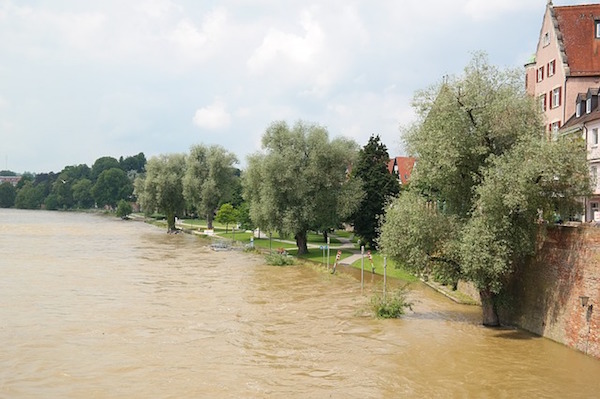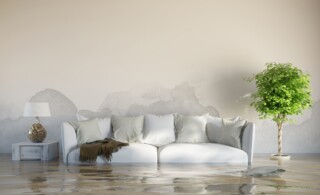
Water damage restoration is one of the most rapidly growing and evolving industries in the country. What used to consist of a contractor setting up a few fans in a flooded basement has now become a bonafide science, largely in part to the greater understanding we now have of the serious negative health repercussions that can be caused by mold, mildew, and bacteria growth, and the better technologies available to tackle a water restoration job.
Priority Number One—Dry the Place Out
Without question, the most important step a homeowner needs to take when faced with flood or other water damage is to waste no time in drying the area out. As has already been mentioned, the old standby of setting up all of your house fans to dry out a flooded basement or structure really isn’t very effective in the long run. It may do a satisfactory job on the surface, but deeper water damage to walls, wood, carpet and furniture, along with insufficient drying, can lead to more serious consequences such as mold and mildew growth, the flourishing of harmful bacteria, and in extreme conditions, actual damage to the structural integrity of the home itself.
In order to combat all these harmful possibilities, the best thing you can do is to call in a licensed local water damage restoration specialist to tackle the job. These professionals are well-schooled in all the latest methods of water damage restoration, and they have access to the most cutting edge technology available to dry out your home and prevent harmful fungi and bacteria from getting a foothold.
What to Expect
With any restoration project, expect a full on assault on your affected area from the get-go. A good restoration specialist will set up dehumidifiers, air purifiers, blowers, fans, and special floor driers and cleaners to quickly and efficiently dry out your water damaged home. Besides these standard steps, and depending on the extent of the damage, your technician might also employ the use of wall driers, sanitizers, and mold and mildew remediation techniques and equipment to ensure that what is already a bad situation doesn’t get worse over time. The water damage restoration cost is far less than what permanent damage results in.
Ready to start your water damage?
Find ProsIn the Long Run
The full extent of the steps that need to be taken could be much greater, however. Depending on the amount of water that caused the damage and the duration of time that passed before a restoration crew was called in, you may be looking at a much larger project. Crawl spaces, ductwork, ceilings and insulation may also need to be attended to, and if there is severe damage to drywall, carpet, or structural aspects of your home, you may be looking at a larger home renovation project altogether. If this is the case, contact a general contractor after your restoration work is done in order to get your house back in working order as quickly as possible.
Please Advise
Water damage is not a problem where you want to cut corners or wait to address. Tackle these homeowner nightmares by calling a water damage restoration company immediately in order to ensure that neither the structure of your home or the health of your family is compromised. With the help of a qualified specialist, you’ll fast be on track towards restoring your home back to its original condition.
 Five Home Projects to Address Immediately After Your House Has Flooded
Five Home Projects to Address Immediately After Your House Has Flooded  Flash Flood Safety and Damage Prevention Guide
Flash Flood Safety and Damage Prevention Guide  The Ultimate Guide to Earthquake-Proofing Your Home
The Ultimate Guide to Earthquake-Proofing Your Home  Lead Paint Common Sense
Lead Paint Common Sense  How Do I Get Rid of the Moldy Odor in My Basement?
How Do I Get Rid of the Moldy Odor in My Basement? 

It sounds like a restoration expert won’t pull any punches when it comes to cleaning up water. My basement floods occasionally, but I’ve never called a service to help me dry it out. Water damage can be extensive while remaining unseen, though, so next time it floods I’ll be calling a service.
Great tips on what to do when water gets inside the house. Spring can be a tough time for basements with rain and water damage.